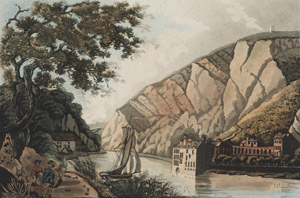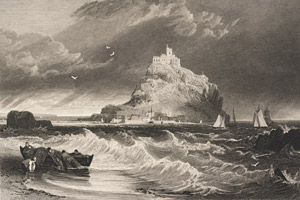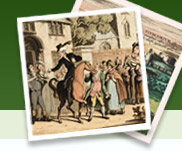Picturesque ExcursionsThe urge to immortalize travels in pictures pre-dates the invention of the camera. In the second half of the eighteenth century amateur and professional artists began to follow where the antiquarians had led, this time seeking out sites for their ‘picturesque’ qualities rather than their historical interest. Areas such as the Wye Valley, north Wales, the Lake District and the Highlands of Scotland were particularly favoured, and many of these travellers were moved to record what they experienced in book form. Turmoil abroad after the French Revolution provided an additional stimulus to British travel by closing off many of the destinations of the Grand Tour, and encouraging patriotic celebration of Britain’s attractions. Developments in the techniques of book illustration over this period helped bring these artistic renditions to a wider circle of admirers. 
‘Front view of Bristol Hot Wells and St Vincent’s Rocks’, drawn and engraved by John Hassell, from A picturesque guide to Bath, Bristol Hot-Wells, the river Avon, and the adjacent country..., London, 1793. Harley-Mason.b.46 
St Michael’s Mount, Cornwall, an engraving by W. B. Cooke after a drawing by J. M. W. Turner, from An antiquarian and picturesque tour round the southern coast of England, London, 1849. Eb.11.35 |

